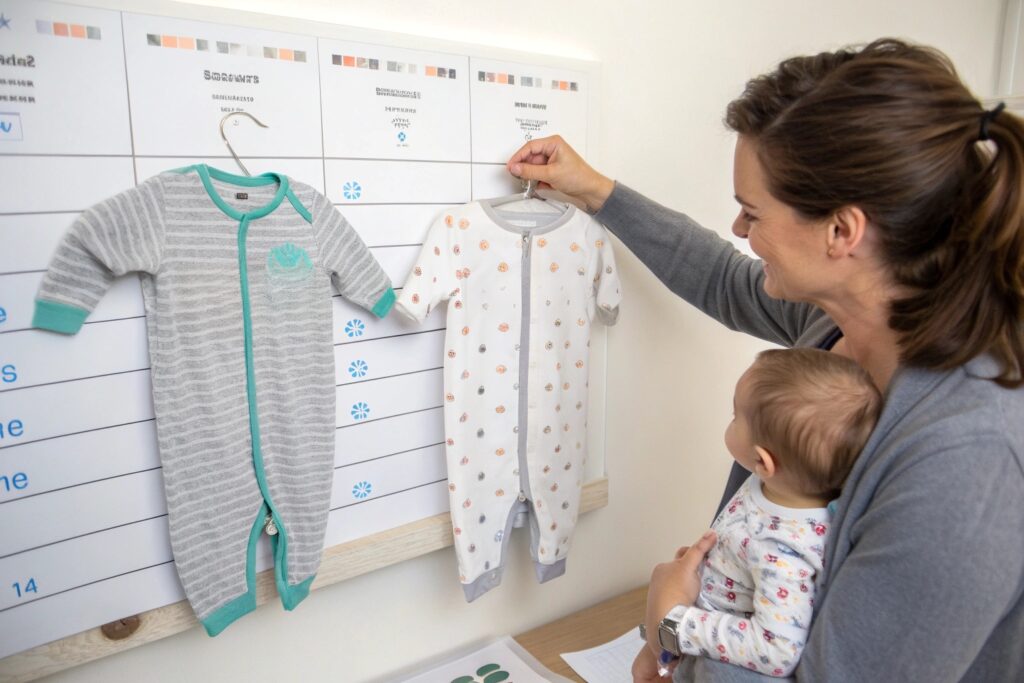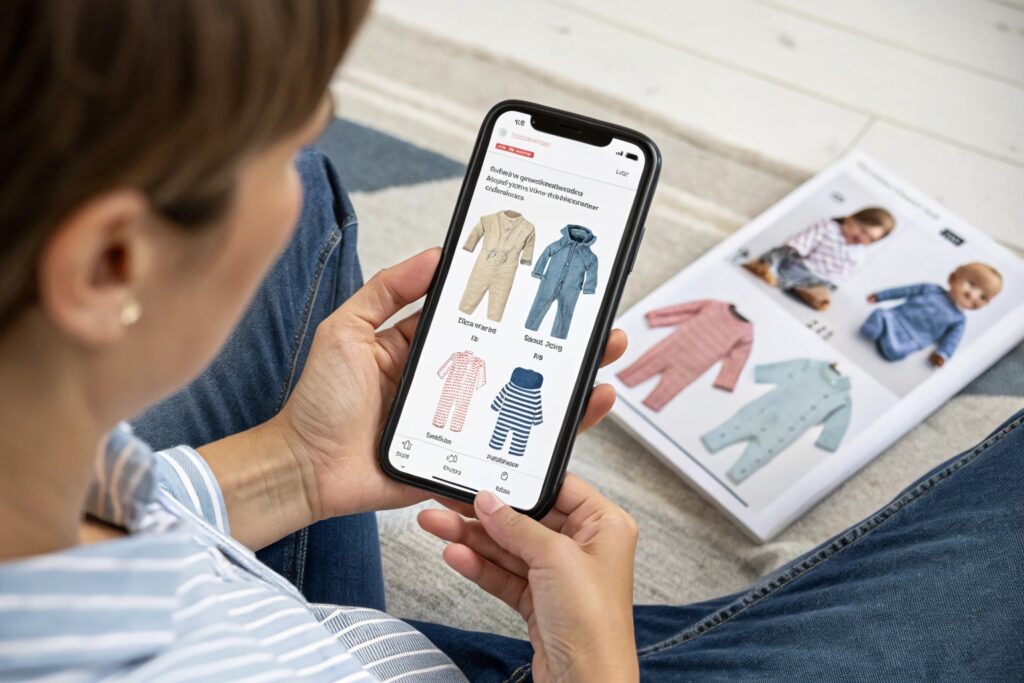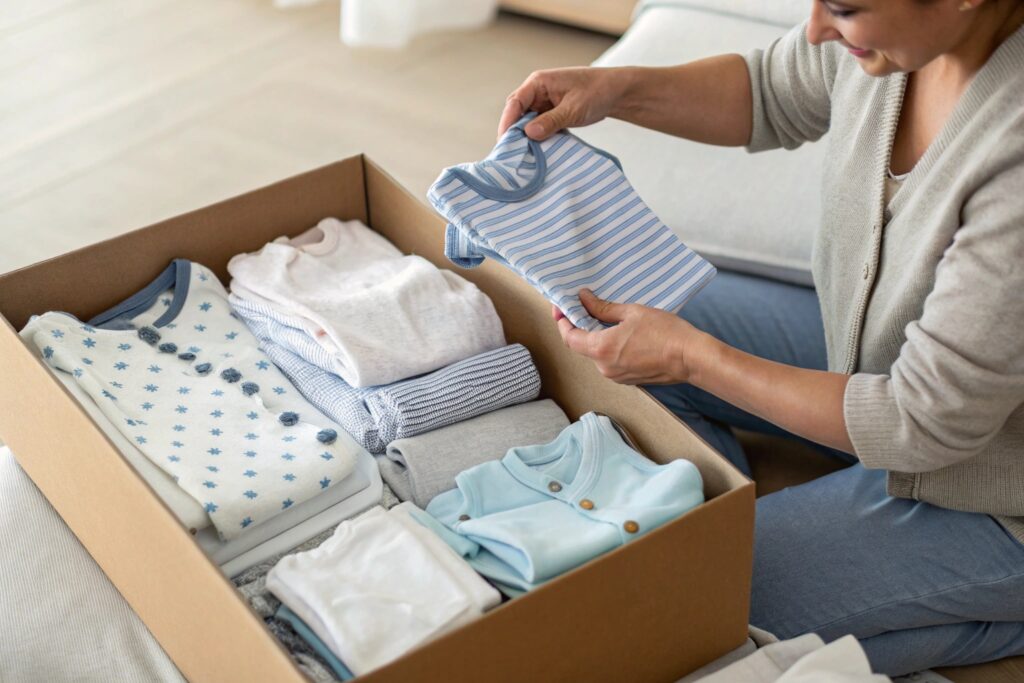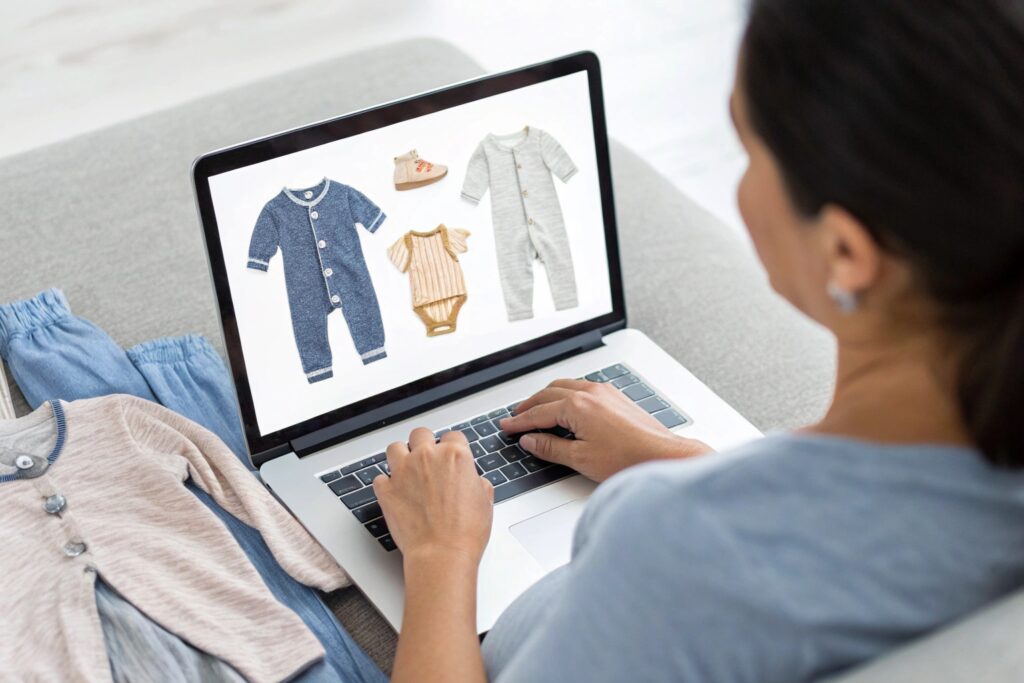Shopping for baby clothes should feel simple and joyful—but for many parents, it’s a maze of confusing sizes, unclear fabrics, and hard decisions. That creates friction—and lost sales.
To simplify the babywear buying journey, brands must improve size guidance, use visual tools, offer easy returns, and provide curated clothing sets.
Here’s how I help brands streamline the experience and turn overwhelmed parents into confident, loyal customers.
How Clearer Size Guides Reduce Confusion for Parents?
Sizing is the number one barrier to smooth babywear shopping. Labels like “0–3M” or “6–9M” don’t mean much when brands use different size rules and babies grow unpredictably.
Clear, detailed size guides reduce confusion by helping parents choose based on weight, height, and real fit expectations—not vague age ranges.

Why are current size charts so ineffective?
Because they:
- Use inconsistent terms (months vs. cm vs. S/M/L)
- Don’t account for diaper space or body shape
- Lack garment measurements or fit notes
- Miss visual examples (like baby model info)
Parents want to know:
“Will this romper fit over a cloth diaper?”
“Should I size up if my baby is 8 kg?”
“Is it slim, stretchy, or relaxed?”
What makes a better size guide?
| Size Label | Baby Height (cm) | Baby Weight (kg) | Fit Type |
|---|---|---|---|
| 66 | 60–66 | 5–7 | Snug fit, stretch cotton |
| 73 | 67–73 | 7–9 | Roomy in torso, true to size |
| 80 | 74–80 | 9–11 | Relaxed fit for layering |
Add:
- Icons (“fits over diapers” / “slim fit”)
- Baby model stats with photos
- “Most parents say: fits true to size”
Clarity = fewer questions, fewer returns, and more trust.
Why Visual Shopping Tools Improve Decision Making?
Parents are busy. Scrolling through endless options without help leads to decision fatigue—and abandoned carts. Visual tools solve that.
Interactive tools like babywear quizzes, outfit builders, model galleries, and close-up videos help parents make faster, more confident decisions.

What kind of visuals work best for babywear shoppers?
-
“85% of parents say this fits true to size.”
-
“What size fits your 5-month-old?”
“Which outfit works best for cold mornings?” -
Style builders:
Let parents mix and match tops/bottoms to see outfits before buying. -
Close-up texture videos:
Show stretch, softness, and movement. -
360° views:
Especially useful for baby outerwear, rompers, and multi-piece sets.
What’s the benefit?
Visual shopping tools reduce guesswork. They also turn product pages into helpful experiences—making parents feel informed, not pressured.
One client I worked with increased conversion by 20% after adding a “Size & Fit Quiz” to their babywear site.
What Role Easy Returns Play in Buyer Satisfaction?
Even with better sizing, some parents will order the wrong fit—or change their mind. A complicated return process destroys trust and repeat sales.
A simple, clear return policy makes parents feel safe buying—and increases customer satisfaction, even when the item doesn’t work out.

Why do parents care so much about returns?
- Babywear is hard to predict—babies grow fast
- Parents are short on time and energy
- Fear of being “stuck” with the wrong size leads to hesitation
If a brand’s return policy is hidden, strict, or vague, shoppers will leave—even if they love the product.
What should a good return policy look like?
| Feature | What Parents Want |
|---|---|
| Return window | 30 days or more |
| Refund type | Full refund or store credit |
| Process clarity | Step-by-step, simple instructions |
| Pre-paid return label | Provided at checkout or by request |
| Size-exchange option | Fast re-shipping, no extra cost |
Bonus: Add fit follow-up messages like
“Was your order the right size? Tell us—we’ll improve our chart!”
This turns a return into a learning moment—and shows the brand listens.
How Curated Babywear Sets Simplify Shopping Choices?
With so many options, parents often freeze. That’s where pre-styled, pre-sized babywear sets come in—making buying easier and faster.
Curated babywear sets reduce decision overload by bundling top-selling items into coordinated outfits or age-based collections.

What kinds of sets work best?
| Type of Set | Target Buyer Need |
|---|---|
| “Starter Set (0–3M)” | First-time parents / baby shower gift |
| “Outfit of the Day” | Fast, stylish combo shopping |
| “Seasonal Set” | Fall layers or summer outfits |
| “Milestone Pack” | For 6M, 12M, and 18M sizes |
I recommend offering:
- 3-piece and 5-piece bundles with size flexibility
- Photos of babies wearing the full set
- A price advantage over buying items individually
These sets reduce friction by removing decision-making stress. Parents think:
“This already works—just add to cart.”
Curated bundles also increase average order value—and make gifting easier.
Conclusion
Simplifying the babywear journey isn’t about more products—it’s about better experiences. With clearer sizing, visual support, flexible returns, and curated sets, brands can turn hesitation into confidence—and one-time shoppers into loyal parents.










